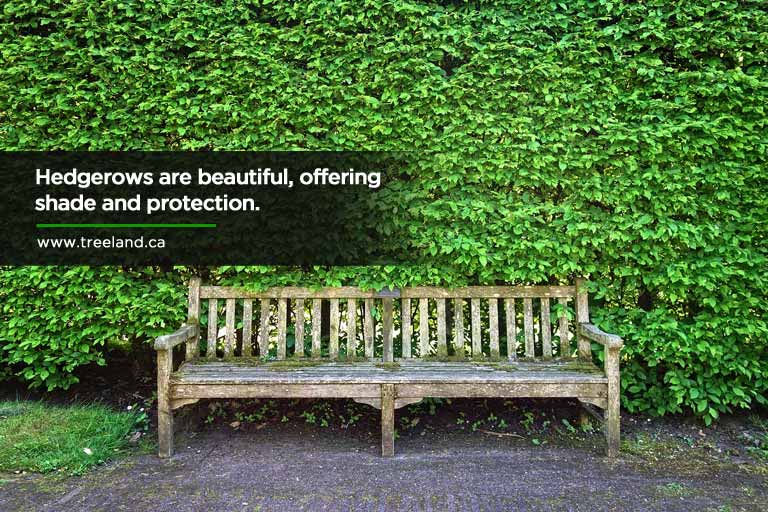
Trees undoubtedly enrich our lives. They enhance property value while cleansing our atmosphere. Proximity to greenery or any garden is proven to lower stress and reduce anxiety, enhancing one’s sense of well-being. Trees can be used to create a private oasis; they protect homes from noise and wind. Privacy screens are more beautiful and less expensive than some fencing or concrete wall options.
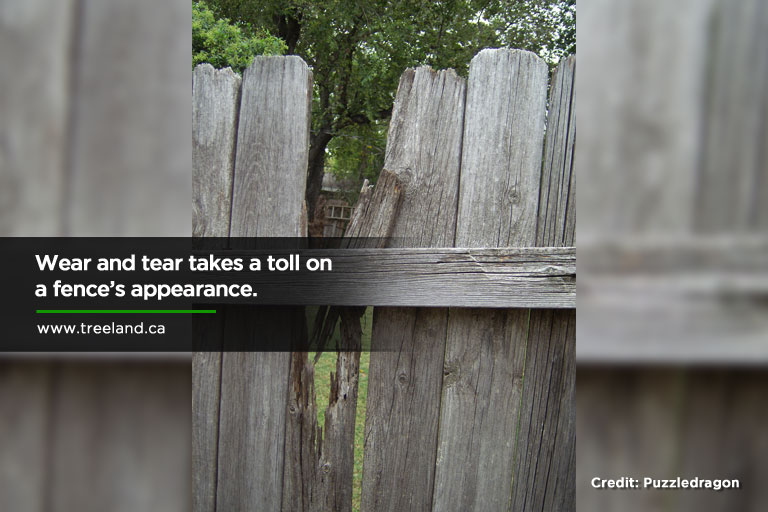
Why Trees Are Preferable to Fences
As urban density rises, privacy is increasingly valued. Fences are one option for homeowners, but they can be unsightly and require routine maintenance. Sanding, painting, and regular repair are also costly. Fence construction must adhere to local bylaws. Wood fences will eventually rot, and their typical height will only shield a home at ground level.
In order to create a long-lasting, privacy screen that provides noise reduction, shade, and protection from prying eyes, consider placing young trees or bushes at key locations around your home or property. There are a variety of attractive options available, depending on your specific needs and interests.
Popular Privacy Trees
When making a choice, consider a tree’s visual appeal and long-term needs.
- Evergreen
Always a popular choice, these trees are particularly low-maintenance. While homeowners will naturally have to wait until saplings reach their desired height, species like pine, cedar and cypress grow quickly. Cypress is particularly resistant to insect infestation, making it an excellent choice for wet areas. Use any option to create a dense row. Select the correct variety for your property, since some species of arborvitae may grow too large(up to 15 feet). Eastern White Pines are cherished for their fine, silky needles.
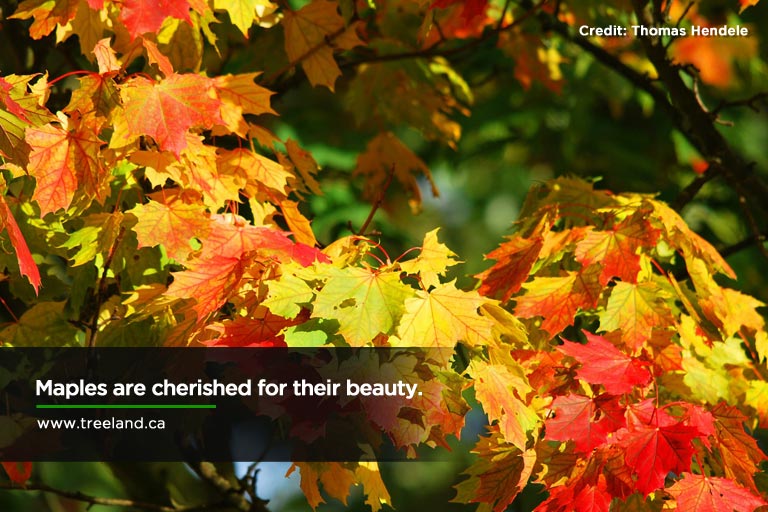
- Deciduous
These tall trees can provide protection for an upper story window, and have the added benefit of providing a beautiful display of fall colour each year. Maples are a classic choice due to their stunning foliage, but some species have shallow roots. Red maples are suited to smaller properties, since they will not overwhelm a home the way the larger silver maple can. Luckily, this species can be easily transplanted if you decide to move an existing tree on your property.
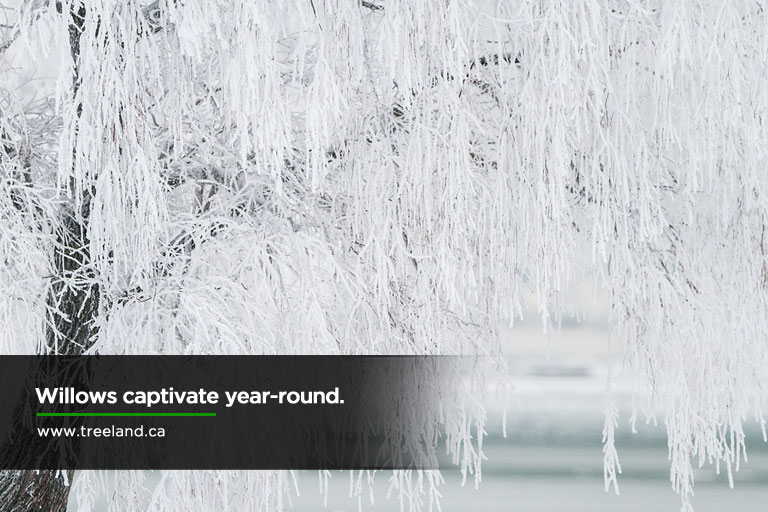
- Willow
Willow hybrids are some of the fastest-growing trees available, rising at a rate of 6 feet per year. The beautiful Tri-Colour Willow is a smaller, shorter option that can liven up its surroundings. Weeping willows are admired for their grace, and for the natural arbor beneath their sweeping limbs. These trees are surprisingly adaptable, and can grow in a variety of soil conditions.
When considering which trees will best suit your needs, keep in mind that moving (or removing) an existing tree is also a possibility. The size of an mature tree will offer enhanced privacy for your home, and relocation will allow you to preserve a much-loved specimen that might otherwise be overshadowed by the introduction of new saplings. If a tree is more than 7 feet tall, be sure to hire experienced tree-moving company. Careless or hasty relocation tactics can easily result in tree loss, damage to adjacent properties, and personal injury. Consultation will also help determine whether cabling or bracing will be necessary to protect a relocated tree.
Privacy is not the only benefit of a natural screen. Trees and bushes offer protection from a variety of elements.
- Wind
A strong wind can strip paint, shatter windows, and damage eavestroughs and rooftops. It can also harm the appearance of your yard. As any experienced gardener knows, wind can be devastating to young plants and flowers. Natural windbreaks can protect a garden. A screen of trees around your house can reduce wind by up to 75%, which can also significantly lower heating costs during colder months.
- Shade
Privacy trees shield windows and walls from harsh sun, reducing the cost of cooling your home. This shade also extends to adjacent gardens and lawns, creating a comfortable respite from the heat.

- Precipitation
Rain, snow, and hail all take a toll on a home’s exterior, necessitating regular upkeep and repair. A natural privacy screen can prevent snow from drifting in and piling around the base of buildings. It can reduce weathering and fading paint. Privacy screen trees can significantly reduce the cost of a home’s upkeep.
- Noise
Wind reduction is just one way trees create a sense of calm inside and outside a home. Even a few carefully placed trees will help cut noise from traffic and surrounding properties.
When selecting trees for your property, keep safety in mind. Trees that are placed too close to a building structure will endanger windows and rooftops as they grow. Falling branches can threaten personal safety. Root depth and width are also to be considered — hire experts to plant your tree and select a spot where they won’t damage underground pipes or foundations.
If trees do encroach on a structure (due to unexpected growth or placement by a previous owner), cabling may be necessary to protect the building. Another common concern is electrical wiring; make sure your trees won’t grow so tall they encroach upon power lines.
Other Options For Privacy
- Shrubs
Juniper is a reliable, all-purpose option. A native viburnum is another low-maintenance selection, some of which develop a non-fragrant flower that closely resembles a hydrangea. Most shrubs require pruning. If you have a smaller home, consult a tree professional to ensure you’re not choosing shrubs that will grow over 15 feet tall, overshadowing the property.
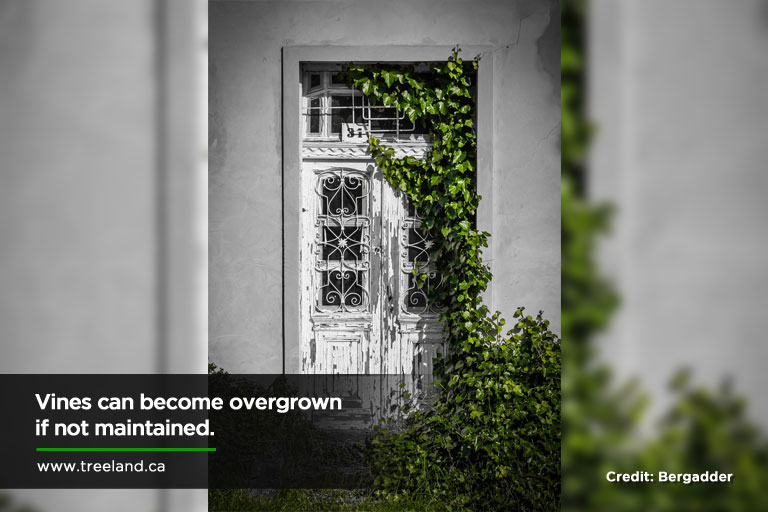
- Vines
Vines have an attractive ornamental effect. They can also be utilized when homeowners wish to conceal certain aspects of a structure. Vines can become quite heavy as they grow, so most will need to be supported by a sturdy arbor or trellis.
- Mixed Screens
Some homeowners may prefer a combination of trees, shrubs and low plants, which creates an appealingly natural, textured look. Small trees are ideal for use in a mixed screen. Ones that widen at the base (such as dogwoods or magnolias) can be particularly useful in this arrangement.
When selecting plants to protect your home, research a variety of options. Some trees, shrubs or vines can take over a yard, overwhelming other species and extending onto neighbouring properties. For example, Wisteria and Morning Glory may become overgrown, creating a different visual effect than intended. Certain invasive vines can actually damage the exterior of a home and be costly to manage or eradicate. (Virginia Creepers, for example, adhere firmly to hard surfaces and are difficult to remove.) Always ask the advice of tree pros.
Consult local and municipal laws before purchasing plants — some species of tree or vine may be banned in your area. Other plants or trees may be unsuited to the type of soil near your home, since PH levels can vary from property to property. Making an informed choice is always preferable to having to correct a situation afterwards.
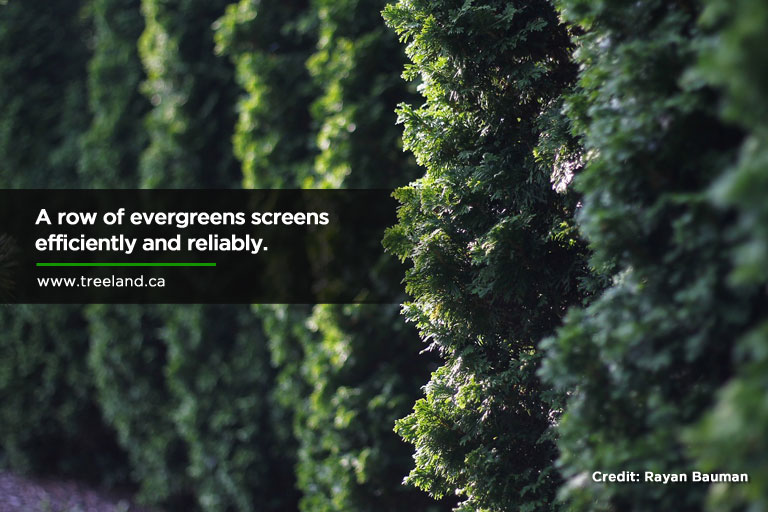
Whether you choose a mixed screen, flowering shrubs, or an even row of stately evergreens, a natural privacy screen enriches quality of life while protecting your home. For trees in Caledon and the GTA, contact Caledon Treeland at (905) 880-1828. Our privacy trees specialists are happy to help you decide which option is the best fit for your lifestyle.
